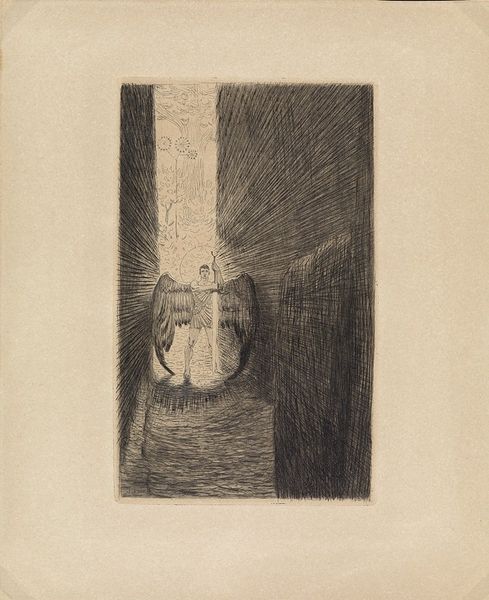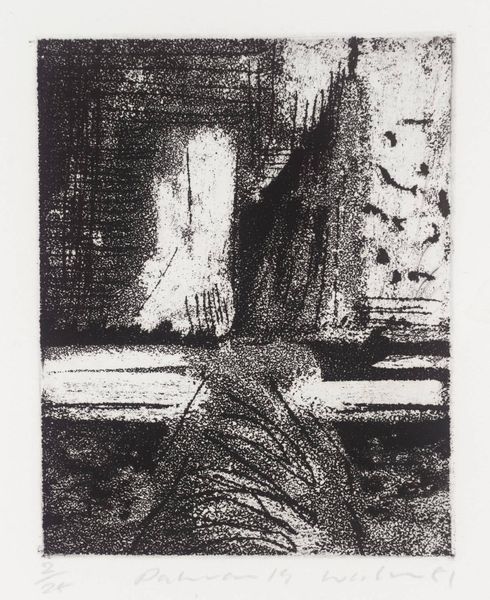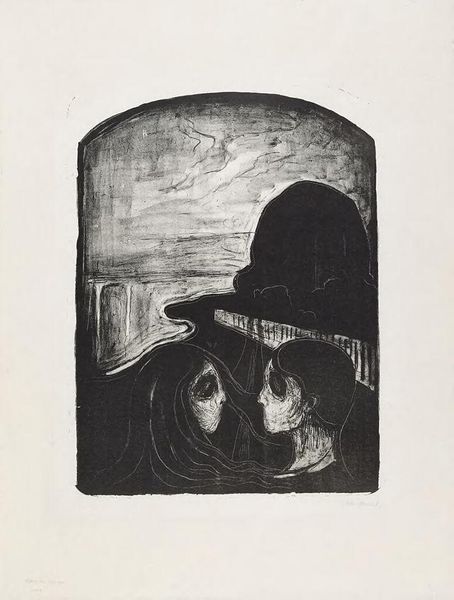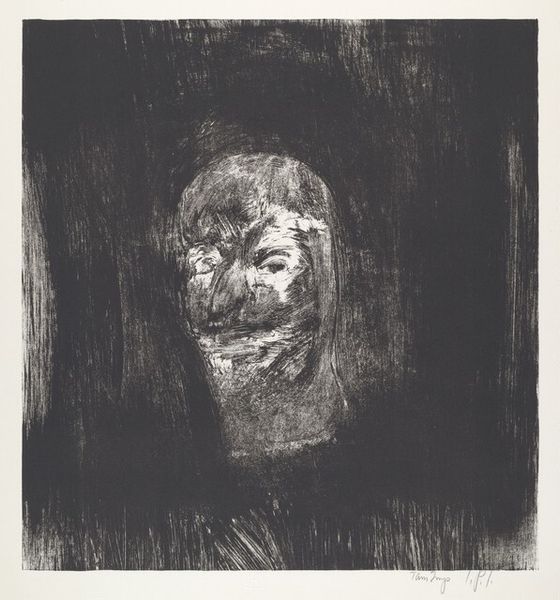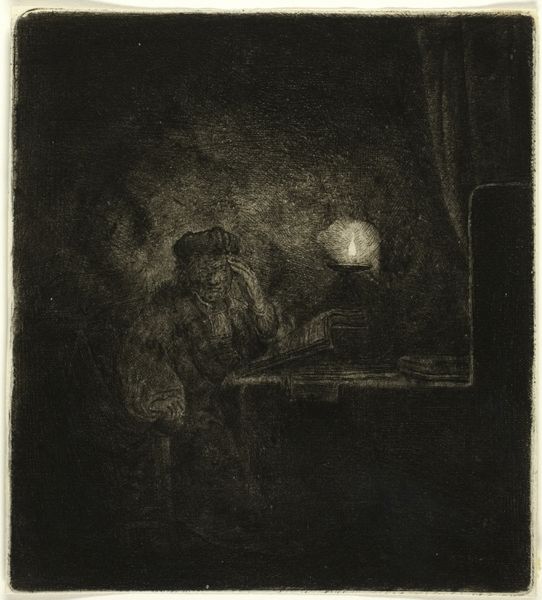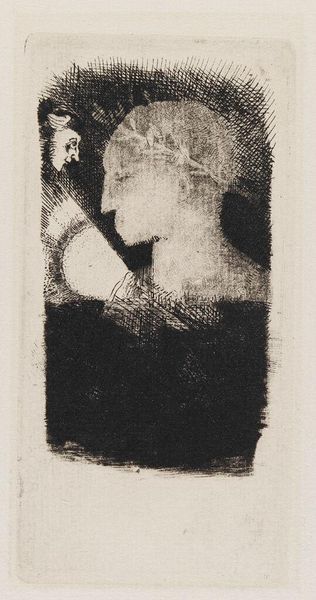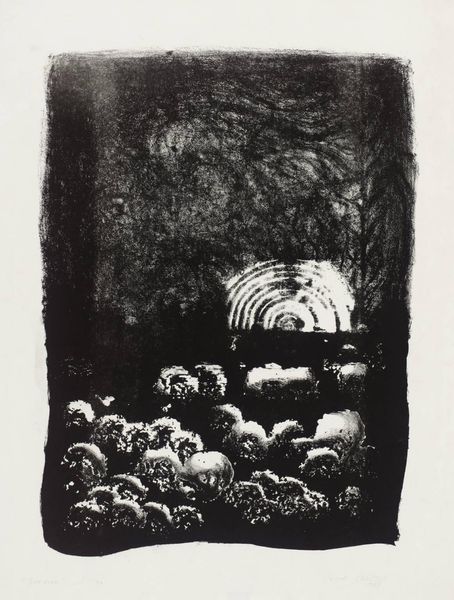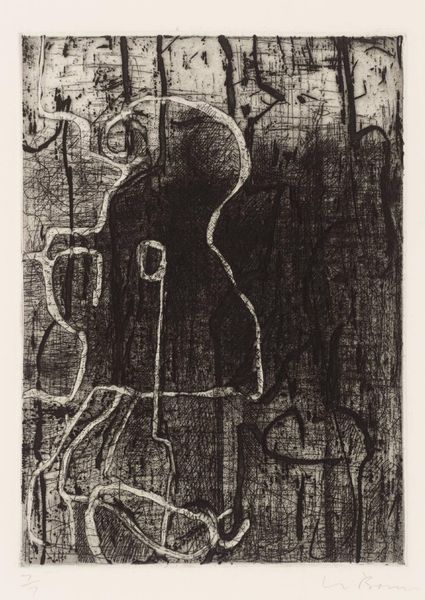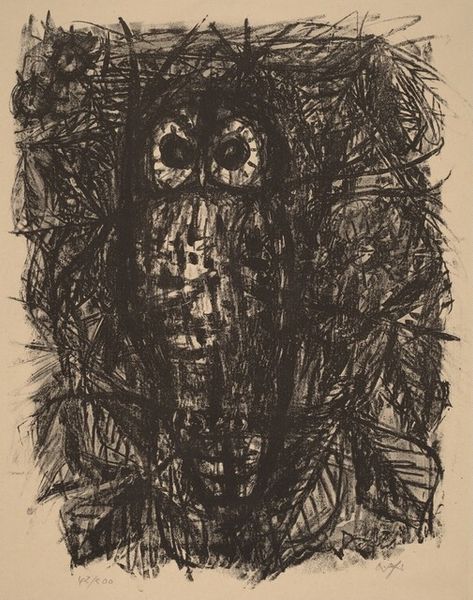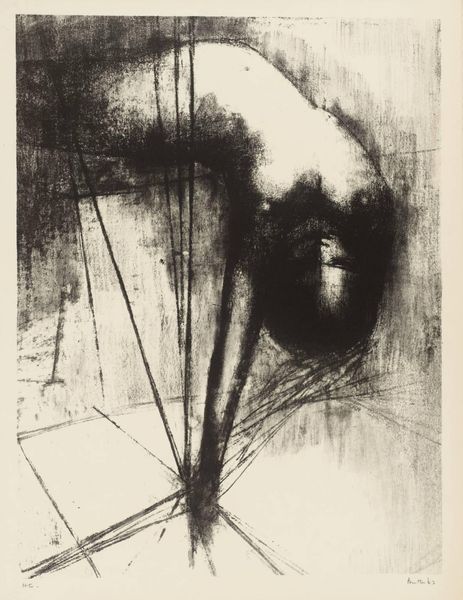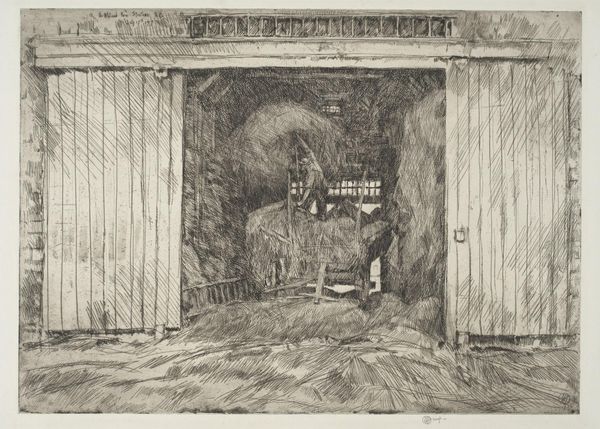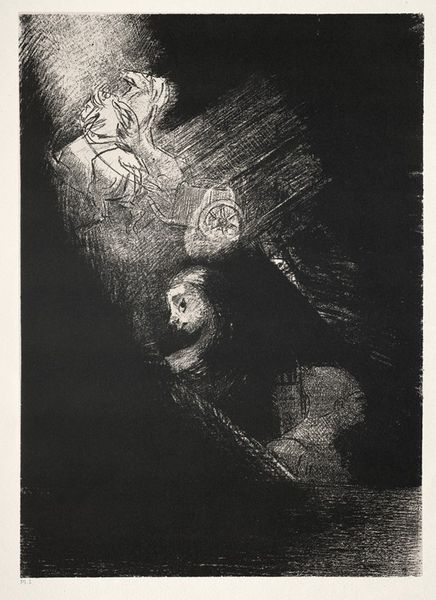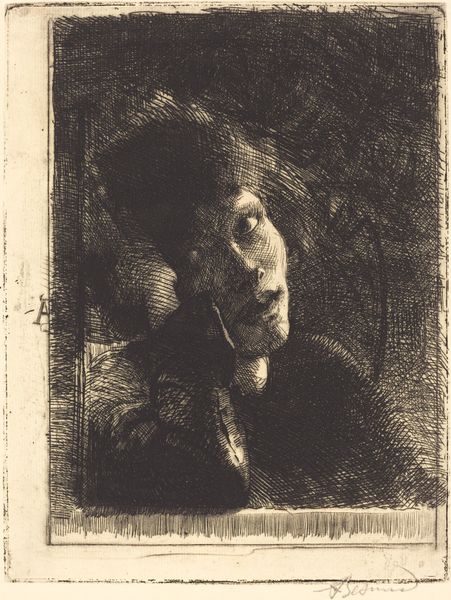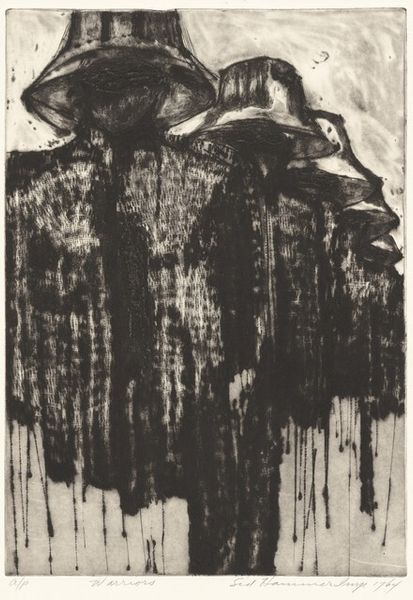
Dimensions: image: 200 x 179 mm
Copyright: © The estate of James Boswell | CC-BY-NC-ND 4.0 DEED, Photo: Tate
Editor: James Boswell's "The Cinema" is a striking image, a small lithograph held by the Tate. The faces in the screen seem intense, and the audience appears almost consumed by the darkness. What visual symbols stand out to you in this image? Curator: Consider the screen – a rectangle within a swirling void. It’s not just a screen, it is a frame for archetypes, for shadows of ourselves. What does the artist wish to convey by presenting these distorted faces? Editor: Perhaps a reflection of the audience's own emotions? Or the power of cinema to transform us? Curator: Precisely. And look at the audience, absorbed, almost shapeless in the gloom. Are they individuals, or a collective, bound together by the flickering light? What might that suggest about the power of shared experiences, and the symbols that emerge from them? Editor: I see how the artist is using the cinema as a space for collective dreaming, a place where symbols are born and amplified. Curator: Indeed. We’ve only just scratched the surface of this deceptively simple image.
Comments
Join the conversation
Join millions of artists and users on Artera today and experience the ultimate creative platform.
tate 7 months ago
⋮
When Boswell joined the Communist Party in 1932 he gave up painting and began to produce graphics for mass reproduction. The prints shown here were made as a result of the many evenings and weekends that he spent exploring the streets and pubs of working-class London, especially in Camden where he lived. Boswell was a founder member of the Artists International Association. This group of artists and designers was formed in 1933 in response to the increasing threat of Fascism and the economic crisis in Britain. Gallery label, September 2004
